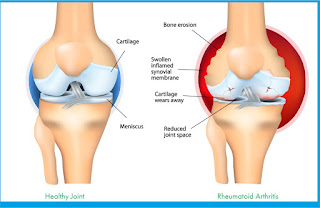TRIGEMINAL NEURALGIA
DR. SHOVAN KUMAR RATH
M.D.(ANAESTHESIOLOGY),
FIAPM, FIPP(NETHERLANDS)
ONLY AT
PAIN FREE ODISHA, HEALTH VILLAGE HOSPITAL
BHUBANESWAR
Srikant,
68, a retired professional was experienceing constant pain in his jaws for the
past 10 years. Assuming that it was a dental pain, he visited several dentists
to get the ailment cured.
He
had several tooth extractions done. However, the pain persisted.
Then
he searched online hoping to find the exact cause of his pain. It was then that
he began to suspect that his pain was caused because of a neurological
disorder.
He
consulted a neurologist and was then diagnosed with a 'suicidal' facial nerve
disease called Trigeminal Neuralgia (TN)
Many
people suffer from this suicidal disease but is often misdiagnosed as a dental
or ENT problem.
TN is
called the suicide disease because it is a persistent pain condition connected
with nerve injury or nerve abrasion and is considered to be the most painful
disease. Often, unable to bear the pain, patients are pushed to commit suicide.
Bollywood
actor Salman Khan was diagnosed with the disease and was treated for it
recently.
TN
affects the trigeminal or the fifth carnial nerve, the largest of the 12 pairs
of cranial nerves. It mainly happens because of vascular compression or tumor.
At an
awareness programme held at the Health Village Hospital, Bhubaneswar, Sujata,
31 year old victim of the dreaded disease, says she often cursed herself for
being a victim of the disease.
"I
had a perfect family and a very supportive husband. But I suffered this pain
for 10 years. Nobody told me the exact cause of the pain and I ended up
spending lakhs of rupees on treatment that did not help. Finally, people around
me thought the pain was imaginary and I had a mental health problem. I was
latter diagnosed with this disease and was fortunately treated for the same a
month ago. After several years, I am pain free now", she said.
The
neuropathic pain, causes serve intermittent unexpected burning or shock like
facial pain that lasts any where from a few seconds to two minutes per episode.
“It
may aggravate during activities like brushing. It usually affects people after
50 years of age but we have been seeing lot of younger patients these days. The
incidence is close to 12 in a lakh. Because of misdiagnosis the cases that come
to the hospital for treatment are fewer."
These
attacks can happen in quick succession, sometimes lasting as long as two hours.
Dr. Shovan Kumar Rath, consultant pain specialist at Health Village Hospital
has treated close to 100 such cases in past couple of years, with advanced RFA.
TRIGEMINAL NEURALGIA
Trigeminal Neuralgia is a condition that is characterised by
shooting pain in the face
•
TN affects one of the largest
nerves in the head: the trigeminal nerve. The trigeminal nerve is responsible
for sending impulses of thouch, pain and termperature to the branin from face.
•
TN can occur when a blood
vessel presses on the nerve near the brain stem, multiple sclerosis or
idiopathic.
•
Sudden, severe, electric shock
like or stabbing pain that lasts several seconds on the face.
•
Pain can be felt around the
nose, lips, eyes, scalp, jaw and forehead
•
Pain can be feltby even the
simple actions of brushing teeth, putting on makeup, touching the face,
swallowing or even feeling a slight breeze on the skin.
•
Pain is typically felt on one
side of the jaw or cheek. 97% feel pain on just one side of the face
•
The pain can come and go
throughtout the day and can last for days, weeks, or months at a time
TREATMENT
•
Treatment options include
medicines, surgery and Radio Frequency Ablation. Dr. Shovan Kumar Rath, an
eminent pain physician of Bhubaneswar says that while some cases can be handled
through medications, in severe cases, one has to go under the Radio Frequency
Ablation (RFA).
•
The most effective way is RFA
of Gasserian Ganglion and the procedure is done under local anaesthesia in day
care basis.
•
The cost of the procedure may
vary from ` 20,000/- to 30,000/-


